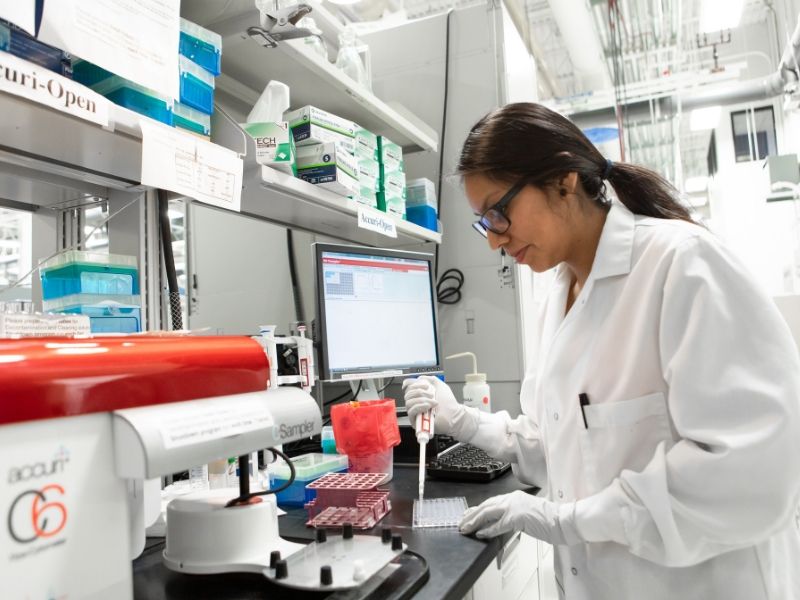This summer, Yesenia Barrera-Millan chose to be a part of the SPUR program at Sanford Research in Sioux Falls, South Dakota, instead of researching in her hometown of Phoenix, Arizona.
SPUR is made for undergraduates like her — a senior at Arizona State University studying biomedical engineering. SPUR, the Sanford Program for Undergraduate Research, is a 10-week program for undergraduate students to do laboratory research.
Researching is something she has always wanted to do, and this is partly because of her brother. He had muscular dystrophy, a group of genetic diseases that cause muscle weakness.
“Seeing how that affected my family motivated me to get into this field to try and see if I could enhance the research in any way,” she said.
Discovering Sanford Research
When looking at the labs offered at Sanford Research, Barrera-Millan knew she would enjoy coming to the Midwest for the summer.
She chose SPUR “because it’s outside of Arizona and would give me the opportunity to get to know other research opportunities outside of the state.” She also liked how all the Sanford Research labs were in the same space, allowing for more collaboration.
Barrera-Millan wanted to do research on neuromuscular disorders, conditions that affect the muscles, and genetics. She thought Dr. Kevin Francis’ Lab would be a perfect fit.
As a part of this lab, Barrera-Millan has been focusing on Smith-Lemli-Opitz syndrome. Distinct facial features, learning difficulties, and behavioral problems characterize this developmental condition.
Barrera-Millan wants to see how cholesterol-regulated proteins interact in different environments. She is doing this because patients with this syndrome usually have decreased cholesterol levels.
“The project I am doing is really interesting and I really like the people that I am working with. They’re easy to get along with and also helpful whenever I ask questions,” she said.
Her passion for neurological research
Barrera-Millan knew she wanted to do research on neuromuscular disorders and genetics when she saw what her brother went through.
Her brother was young when he was first diagnosed with muscular dystrophy. His condition continued getting worse, up to the point where he couldn’t walk anymore. In his early 20s, he needed a tracheostomy system to help him breathe.
“Growing up, I would see how that affected him and my family. My mom had to take care of him 24/7,” she said.
As part of her future career goals, Barrera-Millan is hoping to find a Ph.D. program where she can study molecular biology and genetics to help advance research into muscular dystrophy.
An engineering perspective
In Arizona, Barrera-Millan works in a research lab. Being able to transfer her knowledge of stem cells from school to Sanford Research has benefited her research experience.
She has also learned a lot of new things, such as molecular cloning. “Cloning is something completely new to me. It is exciting to learn more about it and get better at it,” she said.
Before coming to Sanford Research, Barrera-Millan worried that she didn’t have enough background in biology or biochemistry as the other SPUR students.
“Coming into this, I felt at a bit of a disadvantage because I thought I maybe wouldn’t be at the same level or at the same understanding as them,” she said. “After being in the lab for a couple of weeks and talking to a couple of the principal investigators, they have reinforced that coming from an engineering background is to my advantage because I have a different thinking perspective.”
More stories
- Research internship program attracts students nationwide
- Finding the path to Sanford Research
- SPUR program exceeds student’s expectations
…
Posted In Research, Sanford Stories, Undergrad College Resources
